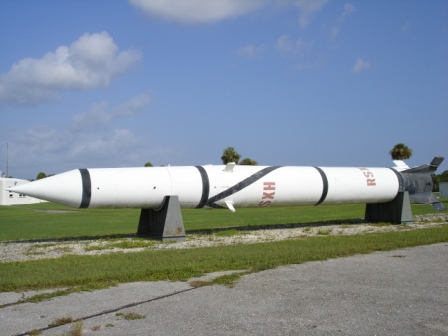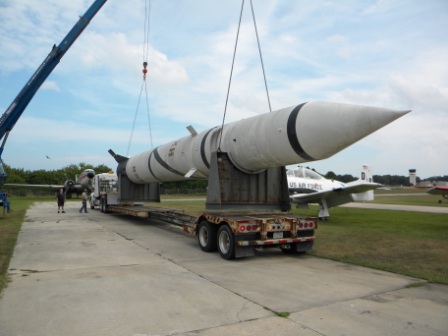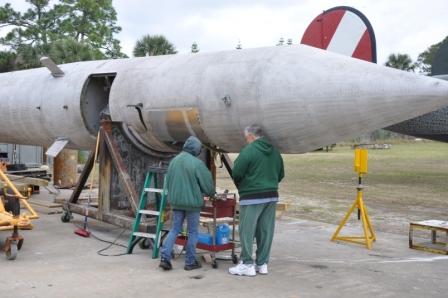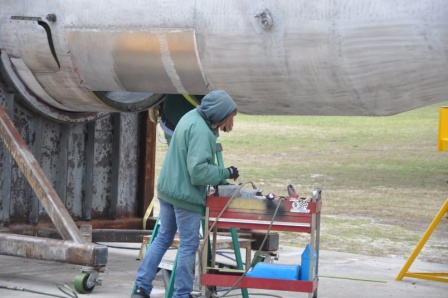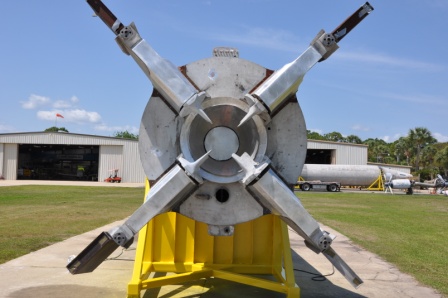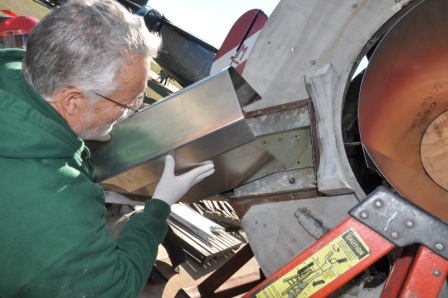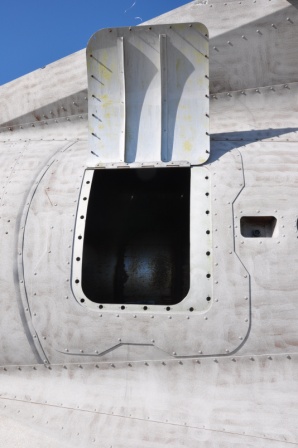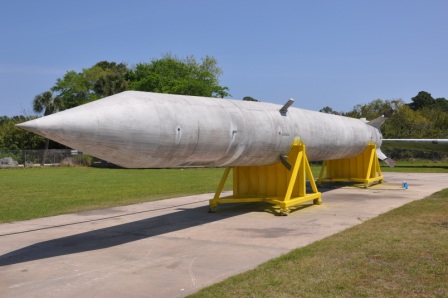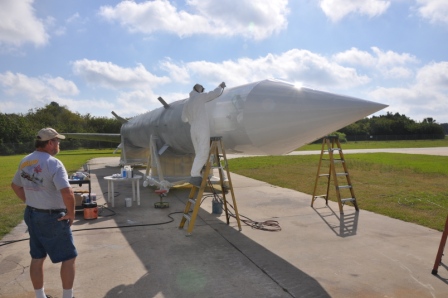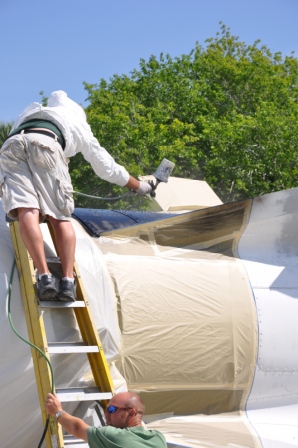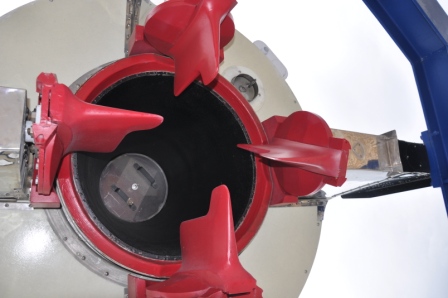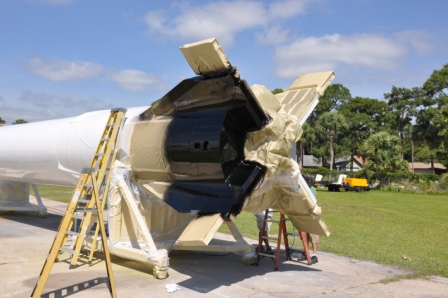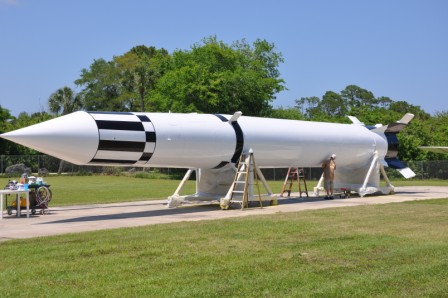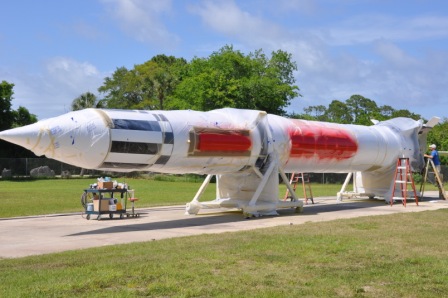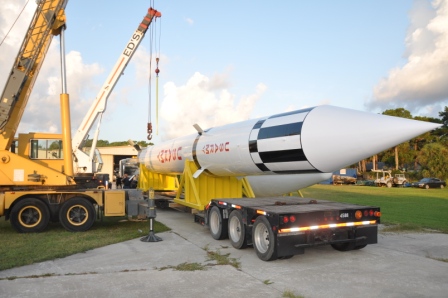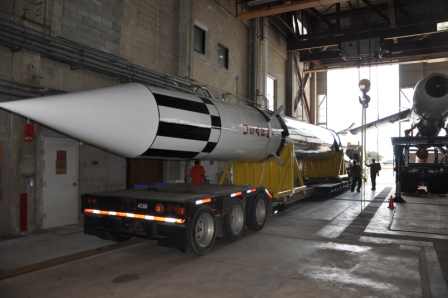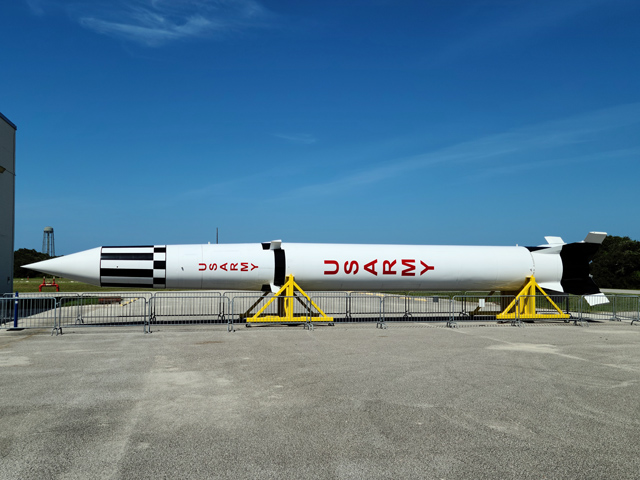
Restoration Gallery
Photo Gallery
Overview
Display location:
- Hangar C, Cape Canaveral Space Force Station
Type: Surface-to-surface guided missile
Designation: M-8 / PGM-11
Serial Number: 3508
Payload: Conventional or nuclear warhead
Agency: U.S. Army
Contractor: Chrysler Missile Division
Cape Canaveral Space Force Station Operations: 1955-1961
History
The Redstone was the first Medium Range Ballistic Missile ever deployed by the U.S. Army. Though it was an awkward weapon to use, it played a major role in the United States space program.
On 20 November 1944, the Army issued General Electric a contract to study and develop long-range guided missiles. Called the Hermes project, this program would have many sub-projects. One such project was the Hermes C-1, a 500-mile range surface-to-surface missile begun in June of 1946. The following year, however, the project was delayed due to a lack of basic technical data on high velocity missiles. A further delay was caused by a lack of funding. As a result, by 1949 little work had been achieved in the development of a 500-mile range missile.
The 29 August 1949 detonation of the Soviet Union’s first nuclear device, plus the start of the Korean War on 25 June 1950, forced Congress to increase military spending. With new money, the Hermes C-1 project was revitalized, and on 11 September 1950, the U.S. Army Ordnance Corps transferred the whole project from the White Sands Missile Range to Redstone Arsenal. There the Hermes engineers joined Werhner von Braun’s engineers to develop a 500-mile missile.
Missile Developement
Five months after the move the payload requirement for the missile was increased ten fold. This increase in payload reduced the weapon’s range by half to 250 miles. Research and development of the missile was then formally transferred to Redstone Arsenal in Huntsville, Alabama on 10 July 1951. A year later, on 8 April 1952, the program was officially assigned the name “Redstone.”
The Redstone single-stage engine was adapted from the Navaho cruise missile and burned liquid oxygen and a fuel mixture made up of 75% alcohol and 25% water. Four vanes attached to four fixed fins at the base of the Redstone controlled its trajectory. These vanes moved as needed to deflect the exhaust, and this motion was sufficient to steer the missile. The Redstone engine produced 77,200 pounds of thrust at liftoff utilizing a 780-horsepower turbopump, with a precision cutoff mechanism. The re-entry vehicle, carrying the warhead separated from the missile following engine cutoff.
Missile Testing & Launches
On 22 October 1952, the Army brought Chrysler Corporation into the program as production contractor. Flight testing then began with the first launch of a Redstone on 8 August 1953 from Cape Canaveral Launch Pad 4. The design of the Redstone was frozen in May 1955. Chrysler received the production contract later that month, and on 15 June 1955 testing began with production missiles. By 1958 a total of 36 Redstone missiles had been launched.
The 40th Field Artillery Missile Group began training with the Redstone missile on 14 March 1956. The first all Army launch occurred on 16 May 1958 and the first units were deployed to West Germany in June of that year. In the wake of improved technology, Redstone missiles were withdrawn from service in 1963.
